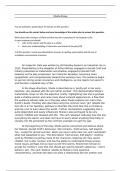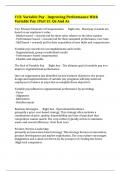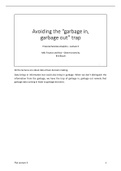Samenvatting
Full summary of lectures and readings for Political Economy year 2023/2024
- Instelling
- Universiteit Van Amsterdam (UvA)
A full summary of lectures and readings for Political Economy, year 2023/2024, including key summaries of texts, economic models & graphs. With this summary, I scored 7.9 on the final exam! Good luck studying!
[Meer zien]













